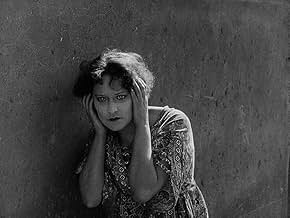In 1923 Jean Epstein had his greatest success with Coeur fidele, a cinematic expression of his theories. Shot on the Marseille waterfront, Coeur fidele features a "cast" of down-and-out characters, colorful cafés, and quays. The story is of a romantic triangle, however, utilized such innovative devices as non-sequential timelines and flashback sequences. Epstein strapped the camera to a merry-go-round at one point to provide images of increasing twirling and dizziness.
Coeur fidele is a contemporary romance whose poetry of the waterfront combines a sordid realism with a stunning visual lyricism- the film is early evidence of Jean Epstein's concern with exploring the expressive possibilities of the cinema. Instead of developing the story conventionally through dramatic confrontations... Epstein emphasizes simple patterns of rhetorical figuring and several ambiguous sequences of privileged subjectivity. In addition, Coeur fidele makes use of an astounding and memorable close-up of it's protagonists staring hauntingly through a window. Gina Manes face (as she looks out of the dirty bistro window)- in a stunning and beautiful image that seems to hover over the narrative itself- that floats over the water of the squalid, dismal harbor.
As previously mentioned, Coeur fidele is a love story in which Marie Epstein plays a minor but significant role as the crippled neighbor of the heroine. As the lovers are reunited (enabled by Marie's shooting of the villainous and drunken husband), the heroine's sick child remains in the dingy apartment as Mademoiselle Marice, dazed by her violently provoked action, cradles the infant on the wooden stairs. There are the last images of Marie, inter-cut with shots on the happy couple on the carnival ride that had been the scene of their separation.
The merry-go-round sequence in Coeur fidele has become an accepted "classic" of cinematic impressionism, as many viewers were (and are) greatly impressed by the striking sequence set on the merry-go-round, on which the heroine rides while in a state of extreme mental agitation. Epstein, inspired by Abel Gance's La Roue, experimented in this scene with the editing of very short bits of film in regular, rhythmic patterns. This section of rapid montage and camera movement has been called by Rene Clair "visual intoxication."























